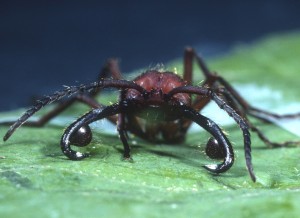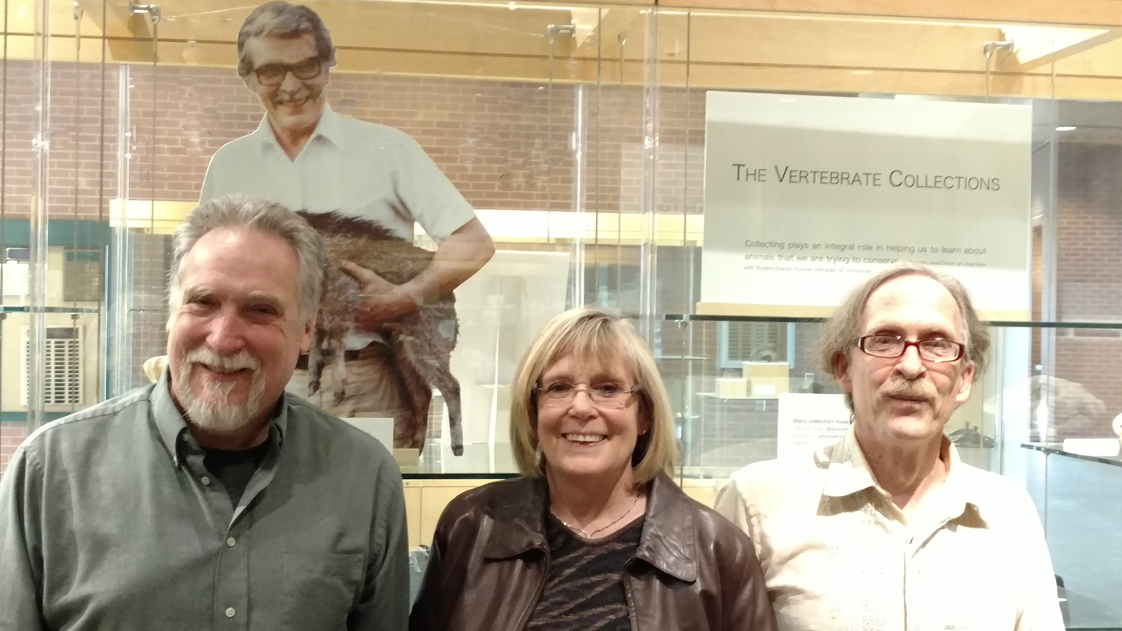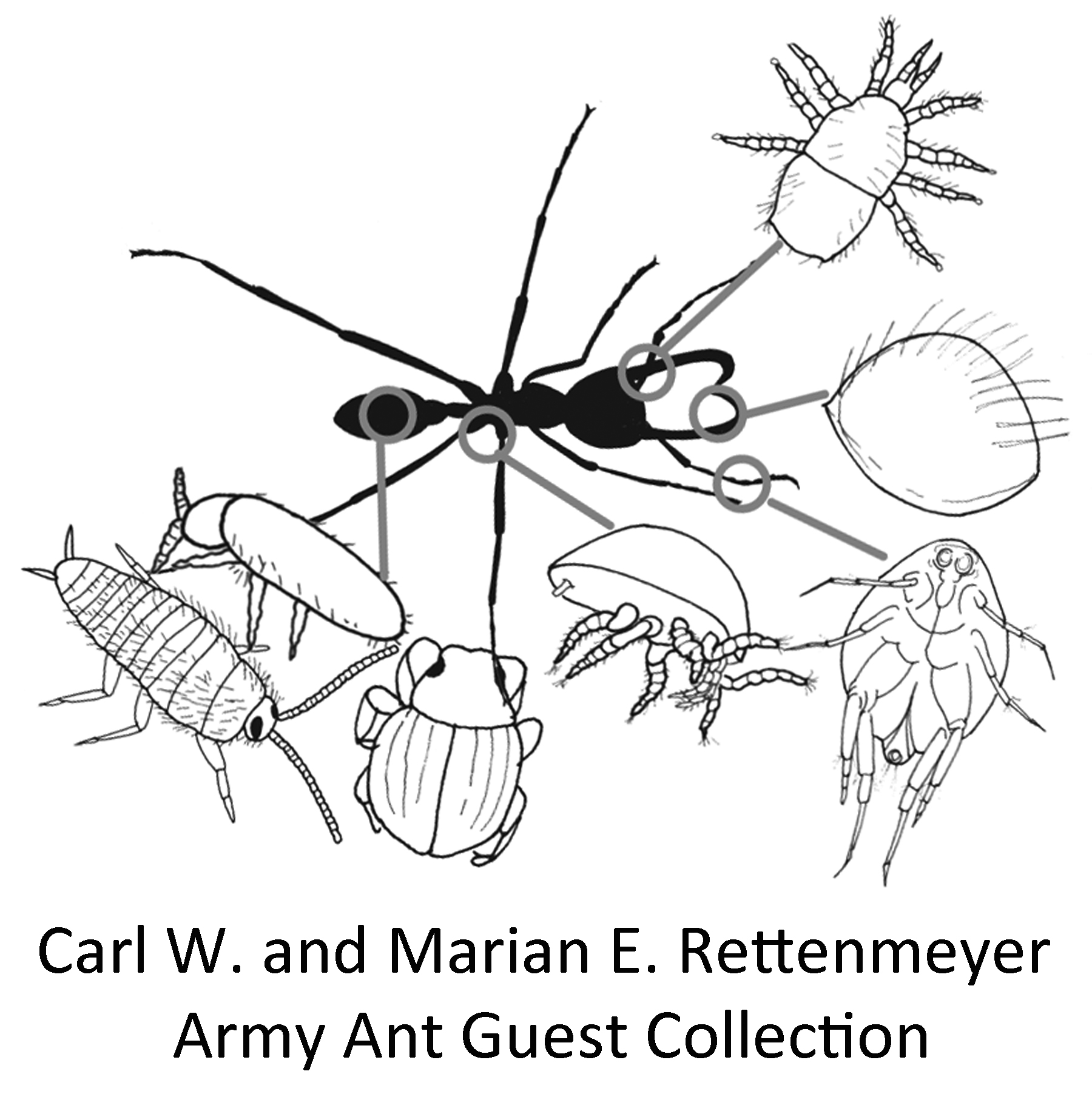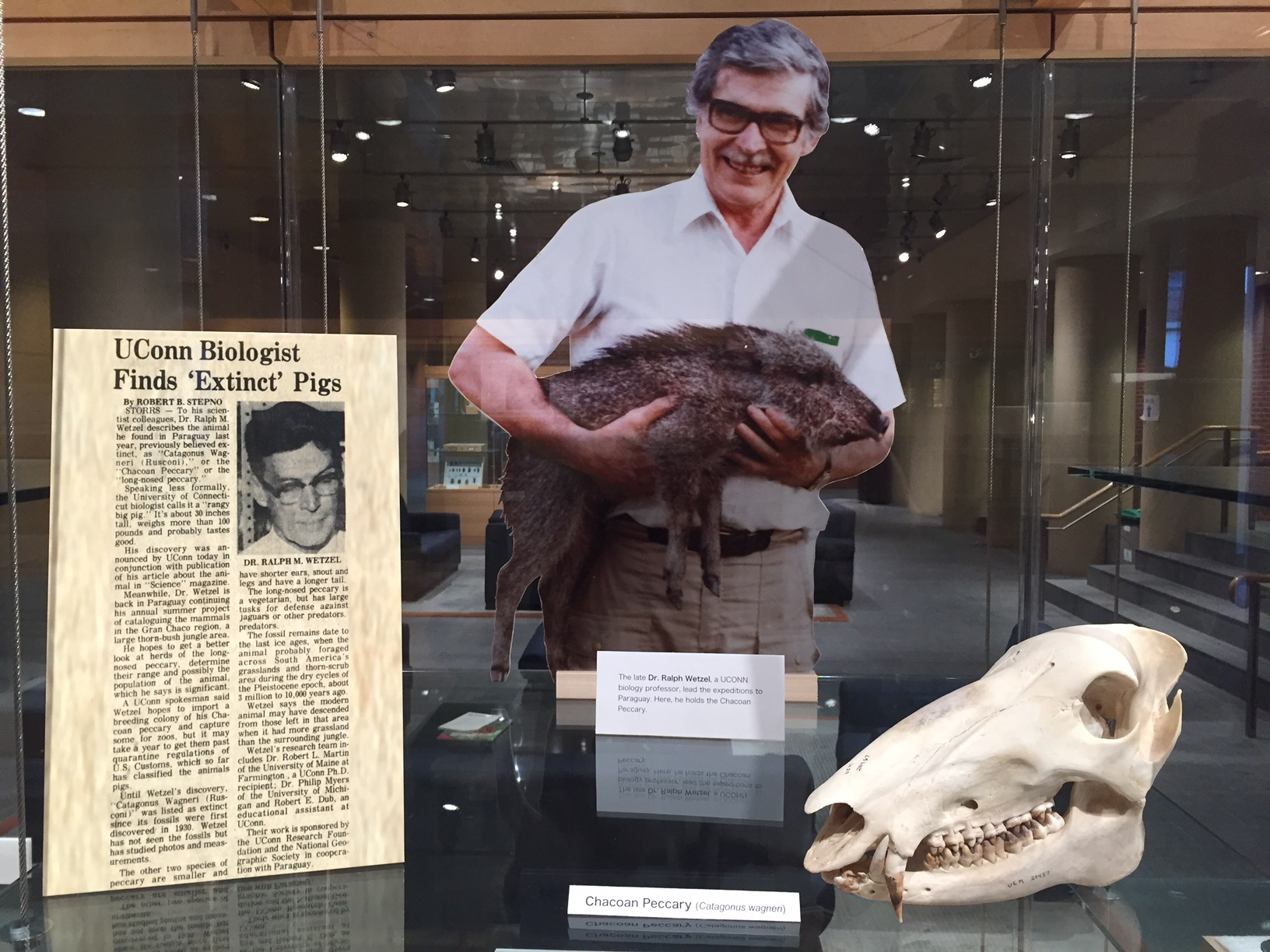 The recent award by NSF in support of the unique Army Ant Guests collection assembled by Carl and Marian Rettenmeyer over 50 years and now housed in the Biodiversity Research Collection is featured in UCONN Today.
The recent award by NSF in support of the unique Army Ant Guests collection assembled by Carl and Marian Rettenmeyer over 50 years and now housed in the Biodiversity Research Collection is featured in UCONN Today.
Month: April 2016
BRC greenhouses in the news
Read a conversation with Matt Opel entitled “Cultivating an Interest: A Look at UConn’s greenhouses” that appeared in the Daily Campus.
Honoring Ralph Wetzel

On Thursday 4/15, EEB held a reception to celebrate the legacy of Ralph M. Wetzel. Attendees included Wetzel family members, friends, former students, and EEB faculty members and students. The event included remarks by Director of the Vertebrate Collections Eric Schultz (who emphasized how the Ralph M. Wetzel Fund has played an important role in supporting the student research), Bob Dubos (who had been a student of Wetzel’s and who played a critical role in discovery of the Chacoan peccary), Greg Anderson (who had been a young faculty member when Wetzel was on faculty), and Holly Brown (who designed a display case that highlights the mammals in the Biodiversity Research Collection, and Wetzel’s contribution to it). In this picture, Wetzel’s children Neal, Erica and Chris Wetzel stand in front of the display case. The reception was followed by a viewing of hummingbird videos by Alejandro Rico-Guevara, a recipient of Wetzel funds, and a research presentation by Phil Myers (emeritus faculty at University of Michigan), who had been a colleague of Wetzel’s and was a coauthor on the paper describing the Peccary’s rediscovery.
UCONN’s BRC in the news
 Following an interview of Dr. Jane O’Donnell by the Associated Press about the award by the National Science Foundation to insure the preservation of the Carl and Marian Rettenmeyer Army Ant Guest collection in the Biodiversity Research Collection, the story hit the web. The award has been featured by various news outlets such as: Hartford Courant, New Haven Register, WNPR, WTHN, New York Times, Washington Times, San Francisco Gate, Richmond Times, KDWN, Cortez Journal, Access WDUN, News channel 10, KCTV5, Yahoo & bigstory.ap.
Following an interview of Dr. Jane O’Donnell by the Associated Press about the award by the National Science Foundation to insure the preservation of the Carl and Marian Rettenmeyer Army Ant Guest collection in the Biodiversity Research Collection, the story hit the web. The award has been featured by various news outlets such as: Hartford Courant, New Haven Register, WNPR, WTHN, New York Times, Washington Times, San Francisco Gate, Richmond Times, KDWN, Cortez Journal, Access WDUN, News channel 10, KCTV5, Yahoo & bigstory.ap.
US News headline reads: The University of Connecticut will give the public access to decades of work by a biologist and his wife who collected more than 2 million army ants and other critters during expeditions to the jungles of Central and South America.
Also listen to the interview of Jane O’Donnell by WHSU.
UConn mammals are now online!
![]() The database of 9,888 mammal specimens in the Biodiversity Research Collection has now been published for all the research world to see. Our data are now available through the VertNet data portal and also through the Global Biodiversity Information Facility, a.k.a. GBIF and the iDigBio data portal. Publishing our data in these portals enhances the value of our collection, providing data on species occurrences and indicating the availability of specimens for loans to researchers. The database can be continually updated as new specimens are accessioned and as new information is gathered. As we continue to update the mammal database we are also working to complete and publish databases of our fishes, amphibians and reptiles, and birds.
The database of 9,888 mammal specimens in the Biodiversity Research Collection has now been published for all the research world to see. Our data are now available through the VertNet data portal and also through the Global Biodiversity Information Facility, a.k.a. GBIF and the iDigBio data portal. Publishing our data in these portals enhances the value of our collection, providing data on species occurrences and indicating the availability of specimens for loans to researchers. The database can be continually updated as new specimens are accessioned and as new information is gathered. As we continue to update the mammal database we are also working to complete and publish databases of our fishes, amphibians and reptiles, and birds.

Reception honoring Ralph Wetzel
 On Thursday 4/14, starting at 3, the Department of Ecology and Evolutionary Biology, and more specifically the Biodiversity Research Collections, is hosting a reception in the Biology Physics atrium, honoring the career of mammalogist Ralph Wetzel, who retired in the mid-1980s after 40 years on faculty here. Among other things he discovered that the Chacoan peccary was not extinct but was alive and well. Ralph published an article in the prestigious journal Science in 1975 for this discovery.
On Thursday 4/14, starting at 3, the Department of Ecology and Evolutionary Biology, and more specifically the Biodiversity Research Collections, is hosting a reception in the Biology Physics atrium, honoring the career of mammalogist Ralph Wetzel, who retired in the mid-1980s after 40 years on faculty here. Among other things he discovered that the Chacoan peccary was not extinct but was alive and well. Ralph published an article in the prestigious journal Science in 1975 for this discovery.
The reception will include remarks by one of his former students, still living in the area, and by one of our grad students who set up a new display case in the atrium featuring Wetzel. Wetzel family members will be present, coming from Florida and Maine.
The reception will be followed by a presentation at 4 pm by Phil Myers, who was a colleague of Wetzel’s and recently retired from the University of Michigan.
New publication (mosses)
The first analysis of transcriptomes of pleurocarpous mosses led by Matt Johnson (postdoc with norman Wickett in Chicago) appeared: Johnson M.G., C. Malle, B. Goffinet, A.J. Shaw & N.J. Wickett. 2016. A phylotranscriptomic analysis of gene family expansion and evolution in the largest order of pleurocarpous mosses (Hypnales, Bryophyta). Molecular Phylogenetics and Evolution 98: 29–40.
Most vouchers for this study are deposited in the CONN herbarium.
The abstract reads: The pleurocarpous mosses (i.e., Hypnanae) are a species-rich group of land plants comprising about 6,000 species that share the development of female sex organs on short lateral branches, a derived trait within mosses. Many of the families within Hypnales, the largest order of pleurocarpous mosses, trace their origin to a rapid radiation less than 100 million years ago, just after the rise of the angiosperms. As a result, the phylogenetic resolution among families of Hypnales, necessary to test evolutionary hypotheses, has proven difficult using one or few loci. We present the first phylogenetic inference from high-throughput sequence data (transcriptome sequences) for pleurocarpous mosses. To test hypotheses of gene family evolution, we built a species tree of 21 pleurocarpous and six acrocarpous mosses using over one million sites from 659 orthologous genes. We used the species tree to investigate the genomic consequences of the shift to pleurocarpy and to identify whether patterns common to other plant radiations (gene family expansion, whole genome duplication, or changes in the molecular signatures of selection) could be observed. We found that roughly six percent of all gene families have expanded in the pleurocarpous mosses, relative to acrocarpous mosses. These gene families are enriched for several gene ontology (GO) terms, including interaction with other organisms. The increase in copy number coincident with the radiation of Hypnales suggests that a process such as whole genome duplication or a burst of small-scale duplications occurred during the diversification. In over 500 gene families we found evidence of a reduction in purifying selection. These gene families are enriched for several terms in the GO hierarchy related to ‘‘tRNA metabolic process.” Our results reveal candidate genes and pathways that may be associated with the transition to pleurocarpy, illustrating the utility of phylotranscriptomics for the study of molecular evolution in non-model species.